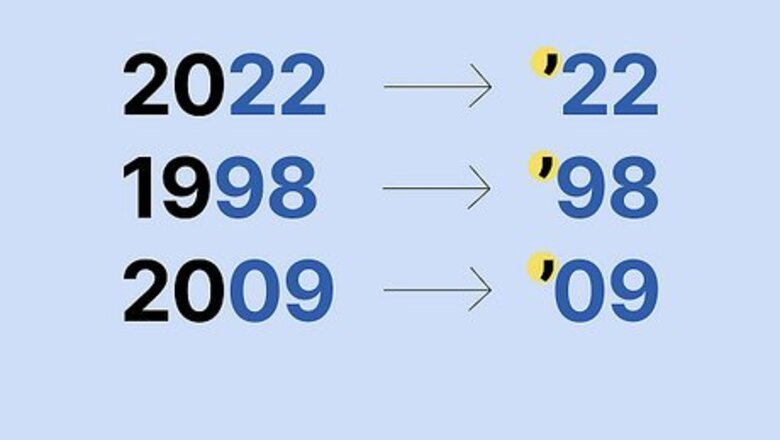
views
- Use an apostrophe (’) before the last 2 digits of a year or decade: the year 2011 would be ’11.
- Place an en dash (–) in between a range of years to act as a conjoining “to” or “through.” He lived from 1987–2005.
- Write the date as “month day, year” in American English and “day month year” in British English. We went golfing on Tuesday, August 17, 2010 or We went golfing on Tuesday, 17 August 2010.
Using an Apostrophe to Abbreviate Years
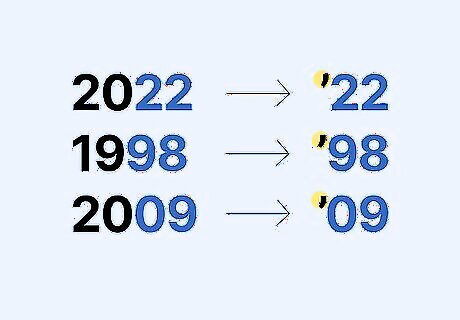
Place an apostrophe before the last 2 digits of a year to abbreviate it. Say you want to shorten the year 2022 in a sentence. Instead of writing 2022, you can abbreviate the year as ’22, using an apostrophe in place of the 20. Check out these examples: A sentence about 1998: Bob Smith was class president in ’98. A sentence about 2009: If I remember correctly, Kanye West stole Taylor Swift’s microphone in ’09. Keep in mind that an apostrophe (’) and closing quotation mark (‘) are not the same. Make sure the thicker end of your apostrophe is up, not down. Get the correct punctuation while typing by hitting the apostrophe key twice and then deleting the first apostrophe.
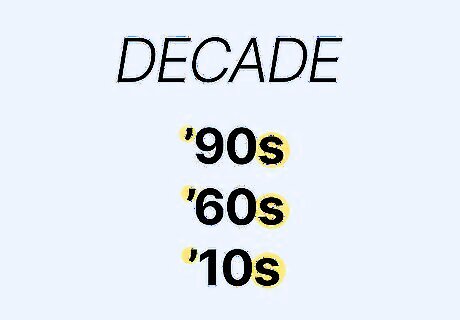
Use an apostrophe and an “s” when abbreviating a decade. Contrary to popular belief, the apostrophe does not go between the number and the “s.” If you’re talking about a span of 10 years, put an apostrophe before the decade year and a lowercase “s” after it. For instance: The ’90s had really great music. The ’60s were full of social unrest. I really regret the fashion choices I made in the ’10s. The coronavirus put the start of the ’20s on hold.
Ranges of Years
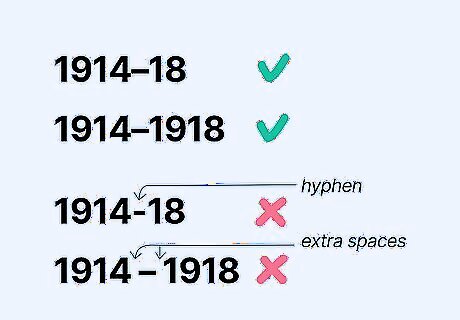
Use an en dash (–) when writing a range of numbers. When you want to note a specific range of years outside of a decade, write them out numerically with only an en dash in between. Avoid extra spaces, and check to make sure you’re using an en dash (–) and not a hyphen (-). Here are some examples: The 1914–18 war officially started after the assassination of Archduke Franz Ferdinand of Austria. In the years 1997–2006, we released 5 albums, but none were successful. Create an en dash on a Mac using Option+Minus and a PC with Ctrl+Alt+Minus.
Dates in a Sentence
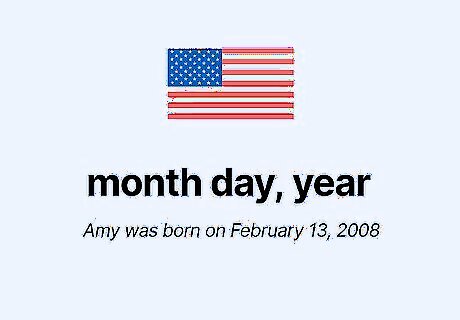
Write the date as “month day, year” in American English. In the United States, the date is written as June 7, 2001. Place a comma between the month and day if you’re writing the full date in a complete sentence. For instance: I saw her on Saturday, April 22, 2017, and my life hasn’t been the same since. Amy was born on February 13, 2008.
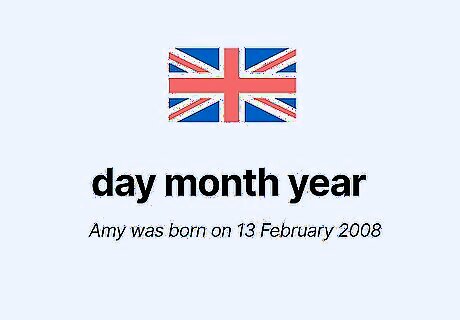
Place the day before the month when writing in British English. In European countries, the date is usually written as 7 June 2001. Leave the commas out and write the date as “day month year.” Your sentence may look something like: I saw her on Saturday, 22 April 2017, and my life hasn’t been the same since. Amy was born on 13 February 2008.
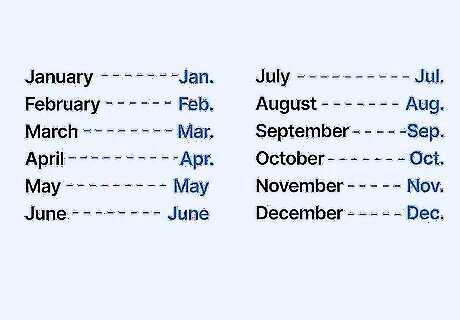
Abbreviate the day and month when writing in shorthand. The month and day of a specific date can be shortened in a complete sentence when the year is excluded. In American English, the day is placed after the month, while in British English, the day is before the month. For example: The semester starts on Sept. 1. (American English) The semester starts on the 1st of Sept. (British English) The months can be abbreviated as follows: Jan. Feb. Mar. Apr. May June Jul. Aug. Sep. Oct. Nov. Dec.
Abbreviating “Years”
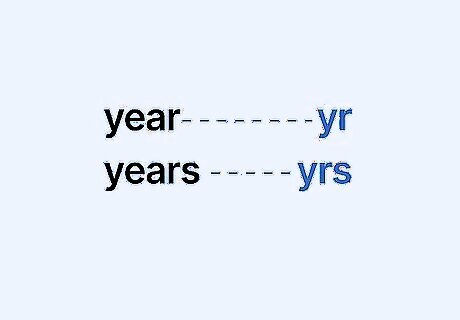
Shorten the word “years” to “yrs.” Dates and numbers aren’t the only thing that can be abbreviated! Consider using the abbreviation “yrs” for “years” and “yr” for “year” when writing quick notes or memos to yourself. Turn in your 6 yr report on Monday. Check how many yrs I’ve had car. Computer is 2–4 yrs old.




















Comments
0 comment